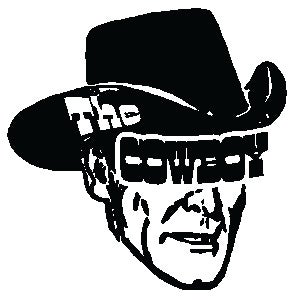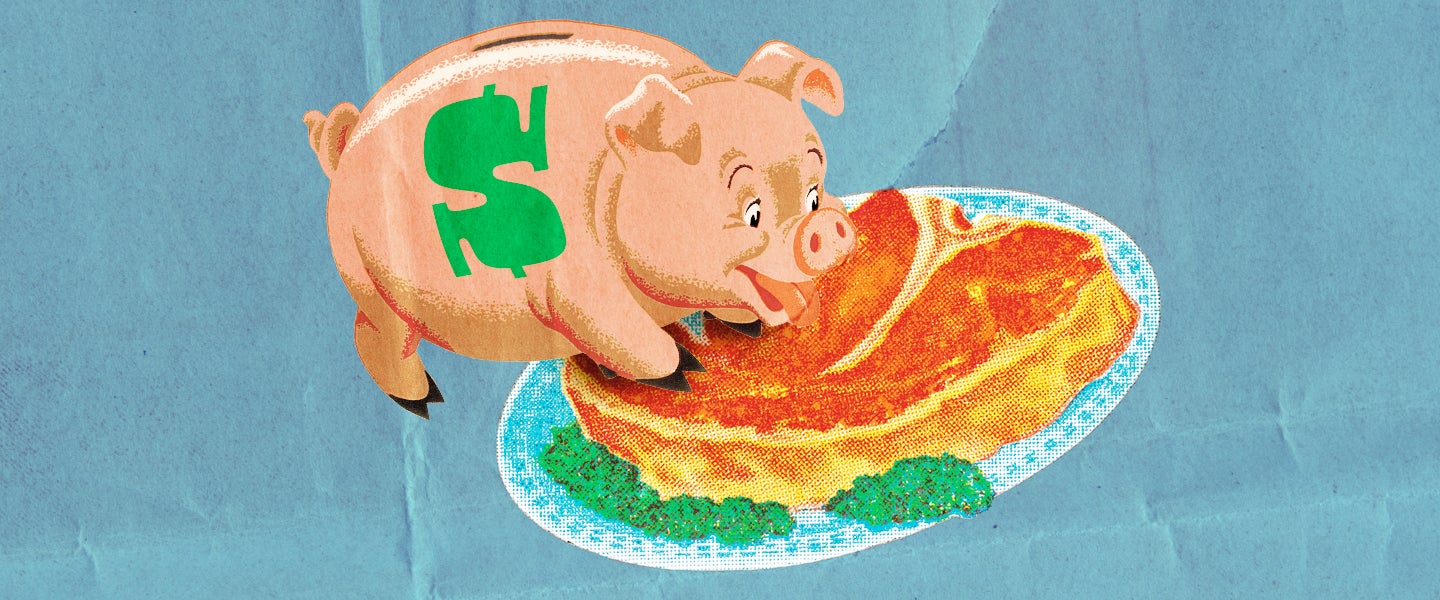 Mmmmmm, steak. Goddamn, is it tasty! But at the end of the day, it doesn’t come from an endangered species, never mind a unicorn — it used to be a cow, of which there seem to be millions alongside every highway, just grazing and passing the time till they end up on your plate. So why are certain chunks of flesh expensive and for special occasions, while other chunks of flesh end up in Happy Meals? Alongside Jeff Lefstein at La Jolla Gourmet Meats, we’re serving up some well-done answers.
Mmmmmm, steak. Goddamn, is it tasty! But at the end of the day, it doesn’t come from an endangered species, never mind a unicorn — it used to be a cow, of which there seem to be millions alongside every highway, just grazing and passing the time till they end up on your plate. So why are certain chunks of flesh expensive and for special occasions, while other chunks of flesh end up in Happy Meals? Alongside Jeff Lefstein at La Jolla Gourmet Meats, we’re serving up some well-done answers.
Let me guess — it’s a supply-and-demand sort of thing.
Yeah, kind of. According to Lefstein, the nice cuts of meat — filet, porterhouse, T-bone, tenderloin and so on — account for less than 10 percent of the beef carcass. Many butchers and slaughterhouses find ways to use almost every part of the cow, but often those parts don’t have profit margins like the nice cuts of meat do. People expect — and are willing — to pay a lot for the premium cuts among that 8 to 10 percent of the cow.
Why are those particular cuts so expensive?
There’s a reason journalists love to describe a grizzled athlete or battle-hardened politician as “tougher than a $2 steak.” The nice cuts are simply more tender — a lot more. That’s because they come from muscles that cows don’t exercise much — ones that are higher up on the animal. Tender is obviously better because no one with an appetite wants to endlessly saw off a piece of meat on their plate, or chew a single bite for minutes at a time.
As you can see from this diagram, the good stuff comes from a really small part of a gigantic animal. Those premium pieces don’t add up to much, but they’re the money makers, and that’s how everyone down the line earns their profits.
Does a butcher have to spend more time on steak?
Yes — at least, Lefstein does. “I’ll tell you what makes the filet mignon so expensive,” he says. “It’s gotta be cleaned up really well. It’s $38.99 here — that’s because we take a lot of the gristle out of it, and every bit of the fat, too. I’m doing one right now, and it takes at least a half an hour to do it. It’s a craft.”
T-bone or porterhouse cuts are done on a bandsaw, he says, so they go faster, but you still have to cut them right and trim them up nicely. Lower-grade fare like chuck is pretty easy, he explains, adding that you can cut that in a minute, and with a knife. His is still $8.99 a pound, “but it’s Prime, so you’re getting a good piece of meat.”
Right, “Prime.” What’s that mean, anyway?
That’s a grade according to the USDA, meaning it’s beef of the highest quality. It’s assigned by meat inspectors to the best, youngest beef with the most fat marbling (which equals flavor). The good stuff goes “Prime” (which is restaurant-quality), then “Choice” and “Select.” Choice is great for other beef cuts like loin and rib, as it’s tender and flavorful and can be cooked in many different ways. Select beef will be leaner and have less flavor, and should often be marinated or braised to make it tender.
After that, the ratings fall to “Standard” and “Commercial,” which are sold ungraded, often as store-brand meat. Lastly, it’s “Utility,” “Cutter” and “Canner” — those grades aren’t generally sold at retail, often ending up as hamburger.
There’s another factor in why Prime is more expensive, too: There’s less of it — and, occasionally, widespread shortages of it, which causes the price to spike.
And what’s the deal with wagyu and Kobe beef?
Wagyu beef involves a specific rearing method for four specific breeds of cattle: They’re fed special food by hand, given jackets when it’s cold, brushed with a stiff comb to massage their muscles and each has a birth certificate to trace its bloodline. The result is a marbly cut of beef that tastes like buttah, since it’s high in certain monounsaturated fats that have a very low melting point — lower than your body temperature, in fact, so it literally melts in your mouth. It’s also really expensive — like, $60 for an 8-ounce steak expensive.
Kobe beef, meanwhile, is a type of wagyu. The charming myths that the cows are fed a diet of beer, classical music and massage treatments are indeed mostly myths, but the cows are pretty damn special: The local Japanese government ensures that all Kobe beef consumed worldwide comes from one of the 12 best cows kept locally, which is insane, and why Kobe beef is extremely rare. Which brings us to a word of warning: Some wagyu in the U.S., and almost all steak labeled as Kobe, isn’t the real thing. So, caveat beef emptor, or something.
What’s the dry aging thing that you see in steakhouses? And why is it expensive?
That’s where the beef sits in a humidity-controlled room for three to four weeks and basically dries out to let bacteria and enzymes in (which are trimmed off before cooking). It gives the beef a nuttier flavor. The whole process is, in a way, like cooking a demi-glaze, in which slowly, steadily reducing a sauce concentrates the flavor.
Dry-aged beef is more expensive for two reasons: One, it’s being stored for an extra few weeks instead of being sold, and so, it’s taking up real estate. Secondly, like an aged whisky that largely evaporates during the aging process, a steak loses a bit of volume in the dry-aging process, and then again when you trim the outer funky crust off before cooking. Lots of people also think there’s a third reason, which is that “dry-aged” steak sounds sexy and lavish, thus restaurants can charge more for it.
About those steakhouses: Why are they expensive?
Well, firstly, they’ve got to buy the beef themselves (Prime, or even wagyu) before they sell it to you, which is an expensive item for any restaurant. There are, of course, many other expensive items on the menu (no, not the creamed spinach): oysters, shrimp, crab and often a formidable wine selection. The restaurant doesn’t obtain any of this for free.
Secondly, just as with any fine-dining restaurant experience, there are a lot of expectations built in: As award-winning food writer Josh Ozersky once wrote, “Steakhouses are not really restaurants, in the strictest sense: They are closer in spirit to strip clubs or spas, places to which people repair for rites of costly self-indulgence, Dionysian revels in which stressed businessmen or harried wives vent their hypertension.” There’s a reason so many steakhouse customers pay with the company card: It’s a special-occasion, playing-with-house-money kind of splurge.
So overall, steaks are… kinda worth it?
If you like them, they sure are. One other thing to bear in mind: Depending what you’re buying, the price might even be under what it’s worth, as the meat industry in general prices things artificially low. Although that’s probably not true if you’re buying a $300 hunk of Kobe.

